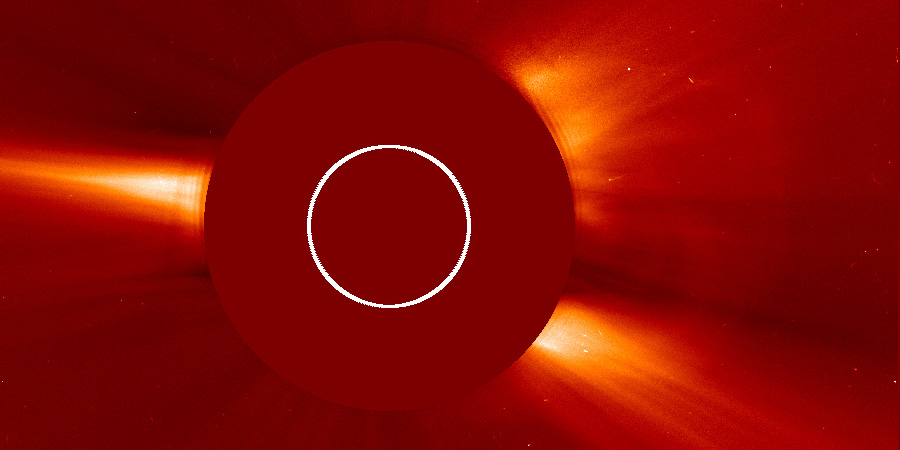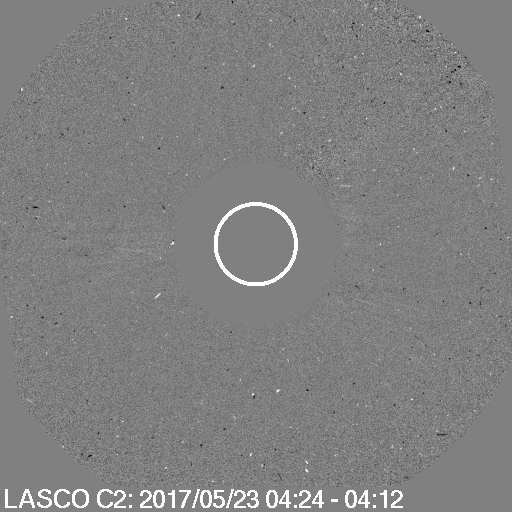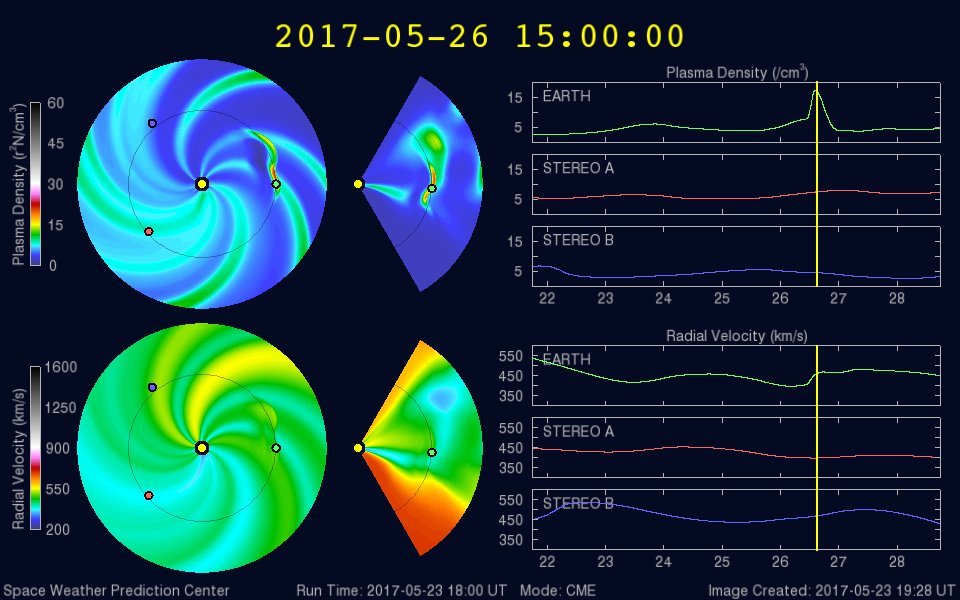Weak CME could give us a glancing blow
Wednesday, 24 May 2017 13:30 UTC

A weak coronal mass ejection (CME) was launched yesterday by an eruption near the center of the earth-facing solar disk. The resulting coronal mass ejection might have an earth-directed component.
The CME became first visible on SOHO/LASCO C2 imagery on 23/04:00 UTC and the C2 coronagraph shows us a partial halo coronal mass ejection. The bulk of the CME isn't very wide but fainter parts of the CME do extend beyond 180 degrees. This means that the coronal mass ejection isn't heading straight towards us but a glancing blow will be possible.

⇧ The coronal mass ejection as captured by the SOHO/LASCO C2 coronagraph.
The coronal mass ejection was very slow (about 200km/s and that means it is slower than the ambient solar wind) making a possible impact time very hard to predict. NOAA's WSA-ENLIL solar wind model predicts the arrival at about 15:00 UTC on 26 May but it wouldn't surprise us if the plasma cloud arrives much later than this. The arrival of this plasma cloud might even be very hard to spot on the solar wind/IMF data from DSCOVR but we should at least see a distinct increase in the total strength of the IMF (Bt). Geomagnetic storming doesn't seem likely from such a weak coronal mass ejection but considering we are in such a quiet space weather period, we did want to mention this event anyway. Might be worth to keep an eye on the solar wind data if you are at a high latitude that isn't plagued by the midnight sun.

⇧ WSA-ENLIL model output showing the predicted arrival time.
Thank you for reading this article! Did you have any trouble with the technical terms used in this article? Our help section is the place to be where you can find in-depth articles, a FAQ and a list with common abbreviations. Still puzzled? Just post on our forum where we will help you the best we can!
Latest news
Latest forum messages
Support SpaceWeatherLive.com!
A lot of people come to SpaceWeatherLive to follow the Sun's activity or if there is aurora to be seen, but with more traffic comes higher server costs. Consider a donation if you enjoy SpaceWeatherLive so we can keep the website online!

Space weather facts
| Last X-flare | 2024/03/28 | X1.1 |
| Last M-flare | 2024/04/25 | M1.3 |
| Last geomagnetic storm | 2024/04/19 | Kp7 (G3) |
| Spotless days | |
|---|---|
| Last spotless day | 2022/06/08 |
| Monthly mean Sunspot Number | |
|---|---|
| March 2024 | 104.9 -19.8 |
| Last 30 days | 136.2 +28 |


